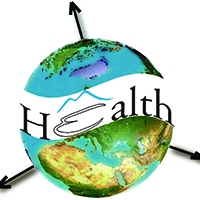Does the Geohealth domain require a body of knowledge?

Published: 29 November 2022
Abstract Views: 1381
PDF: 531
HTML: 21
HTML: 21
Publisher's note
All claims expressed in this article are solely those of the authors and do not necessarily represent those of their affiliated organizations, or those of the publisher, the editors and the reviewers. Any product that may be evaluated in this article or claim that may be made by its manufacturer is not guaranteed or endorsed by the publisher.
All claims expressed in this article are solely those of the authors and do not necessarily represent those of their affiliated organizations, or those of the publisher, the editors and the reviewers. Any product that may be evaluated in this article or claim that may be made by its manufacturer is not guaranteed or endorsed by the publisher.
Similar Articles
- Olga De Cos, Valentín Castillo-Salcines, David Cantarero-Prieto, A geographical information system model to define COVID-19 problem areas with an analysis in the socio-economic context at the regional scale in the North of Spain , Geospatial Health: Vol. 17 No. s1 (2022): Special issue on COVID-19
- Benyamin Hoseini, Nasser Bagheri, Behzad Kiani, Amirabbas Azizi, Hamed Tabesh, Mahmood Tara, Access to dialysis services: A systematic mapping review based on geographical information systems , Geospatial Health: Vol. 13 No. 1 (2018)
- Sherif Amer, Ellen-Wien Augustijn, Carmen Anthonj, Nils Tjaden, Justine Blanford, Marc van den Homberg, Laura Rinaldi, Thomas van Rompay, Raúl Zurita Milla, Geospatial Health: achievements, innovations, priorities , Geospatial Health: Vol. 19 No. 2 (2024)
- Gayani Shashikala Amarasinghe, Thilini Chanchala Agampodi, Vasana Mendis, Suneth Buddhika Agampodi, The geo-spatial perspective of biological, social and environmental determinants of early pregnancy anaemia in rural Sri Lanka: Need for context-specific approaches on prevention , Geospatial Health: Vol. 17 No. 2 (2022)
- Manuel O. Espinosa, Francisco Polop, Camilo H. Rotela, Marcelo Abril, Carlos M. Scavuzzo, Spatial pattern evolution of Aedes aegypti breeding sites in an Argentinean city without a dengue vector control programme , Geospatial Health: Vol. 11 No. 3 (2016)
- Els Ducheyne, Johannes Charlier, Jozef Vercruysse, Laura Rinaldi, Annibale Biggeri, Janina Demeler, Christina Brandt, Theo de Waal, Nikolaos Selemetas, Johan Höglund, Jaroslaw Kaba, Slawomir J. Kowalczyk, Guy Hendrickx, Modelling the spatial distribution of Fasciola hepatica in dairy cattle in Europe , Geospatial Health: Vol. 9 No. 2 (2015): GLOWORM Special Issue
- Michał Paweł Michalak, Jack Cordes, Agnieszka Kulawik, Sławomir Sitek, Sławomir Pytel, Elżbieta Zuzańska-Żyśko, Radosław Wieczorek, Reducing bias in risk indices for COVID-19 , Geospatial Health: Vol. 17 No. s1 (2022): Special issue on COVID-19
- Leonard E.G. Mboera, Veneranda M. Bwana, Susan F. Rumisha, Grades Stanley, Patrick K. Tungu, Robert C. Malima, Spatial abundance and human biting rate of Anopheles arabiensis and Anopheles funestus in savannah and rice agro-ecosystems of Central Tanzania , Geospatial Health: Vol. 10 No. 1 (2015)
- Reyna Ortega-Sánchez, Isabel Bárcenas-Reyes, Jesús Luna-Cozar, Edith Rojas-Anaya, José Quintín Cuador-Gil, Germinal Jorge Cantó-Alarcón, Nerina Veyna-Salazar, Sara González-Ruiz, Feliciano Milián-Suazo, Spatial-temporal risk factors in the occurrence of rabies in Mexico , Geospatial Health: Vol. 19 No. 1 (2024)
- Amare Sewnet Minale, Kalkidan Alemu, Mapping malaria risk using geographic information systems and remote sensing: The case of Bahir Dar City, Ethiopia , Geospatial Health: Vol. 13 No. 1 (2018)
<< < 4 5 6 7 8 9 10 11 12 13 > >>
You may also start an advanced similarity search for this article.

 https://doi.org/10.4081/gh.2022.1171
https://doi.org/10.4081/gh.2022.1171








